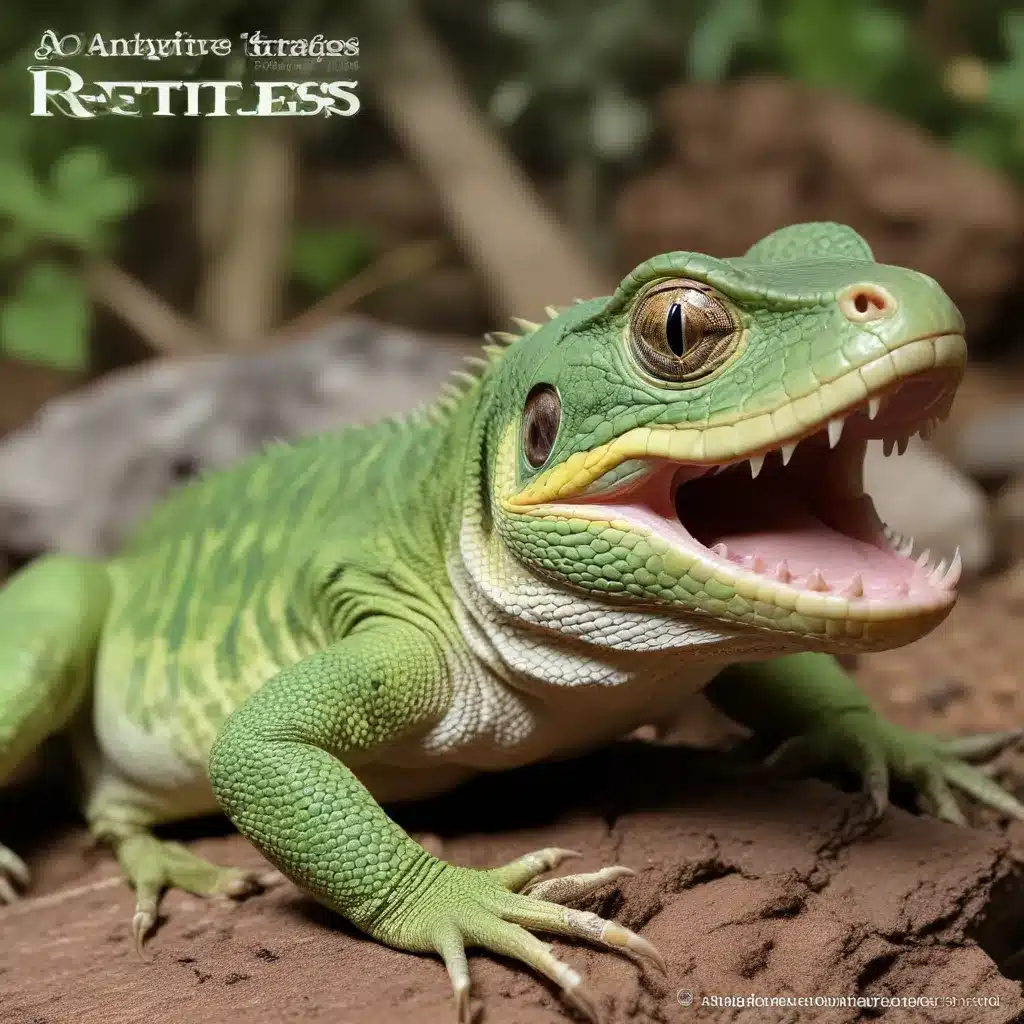
In the captivating realm of exotic reptiles, the intricate mechanisms that govern their biology and behavior have long fascinated enthusiasts and researchers alike. These remarkable creatures possess an array of adaptations that allow them to thrive in diverse environments, from arid deserts to lush tropical forests. As we delve into the world of reptile care and breeding, it is crucial to understand the nuanced intricacies that underpin their remarkable physiology.
Thermoregulation: The Key to Reptilian Survival
One of the most striking features of reptiles is their ability to regulate their body temperature through a process known as thermoregulation. Unlike warm-blooded mammals and birds, reptiles are ectothermic, meaning they rely on external sources of heat to maintain their optimal body temperature. This adaptation allows them to conserve energy and adapt to a wide range of climatic conditions.
Reptiles employ various strategies to regulate their body temperature, including basking in the sun, seeking shaded areas, or burrowing underground. This precise control over their thermal environment is essential for a range of physiological processes, from digestion and immune function to reproduction and growth. By carefully monitoring and adjusting their body temperature, reptiles can optimize their energy expenditure and maximize their overall well-being.
Numerous studies have highlighted the intricate mechanisms behind reptilian thermoregulation, shedding light on the complex interplay between environmental factors and the reptilian physiology. Understanding these adaptations is crucial for providing optimal care and ensuring the health and longevity of captive reptiles.
Respiratory and Circulatory Systems: Adaptations for Survival
Reptiles have evolved unique respiratory and circulatory systems that allow them to thrive in challenging environments. Their lungs, while relatively simple in structure compared to mammals, are highly efficient at extracting oxygen from the air, even in low-oxygen conditions.
Many reptile species, such as crocodiles and turtles, have the ability to hold their breath for extended periods, an adaptation that allows them to survive in aquatic environments or when submerged during hibernation. This remarkable feat is achieved through specialized cardiovascular adaptations, including the ability to divert blood flow away from certain organs to conserve oxygen.
Research has shown that reptiles’ circulatory systems are highly adaptable, allowing them to adjust blood flow to meet the demands of different activities, such as diving, basking, or escaping predators. These adaptations are crucial not only for survival but also for the successful breeding and rearing of offspring, as they ensure the efficient delivery of oxygen and nutrients to developing embryos and hatchlings.
Reptilian Reproduction: Strategies for Propagating the Species
Reptilian reproduction is a fascinating area of study, with a diverse range of strategies employed by different species. From egg-laying to live-bearing, reptiles have evolved unique adaptations to ensure the survival and propagation of their offspring.
Egg-laying reptiles, such as snakes and lizards, must carefully select nesting sites that provide the optimal temperature and humidity for egg development. These sites may be underground burrows, rotting logs, or even specialized nesting chambers constructed by the female. The incubation period can vary greatly, depending on the species and environmental factors, with some species taking several months to hatch.
Live-bearing reptiles, on the other hand, retain their eggs within their bodies, allowing the embryos to develop internally. This adaptation is particularly advantageous in colder climates, as the female can regulate the temperature and provide a more stable environment for the developing offspring. The gestation period for live-bearing reptiles can also vary, with some species giving birth to fully developed young, while others deliver partially developed offspring that complete their development outside the mother’s body.
Advances in reptile breeding techniques have enabled enthusiasts and professionals to successfully breed a wide range of exotic species in captivity. Understanding the specific reproductive strategies and requirements of different reptile species is essential for ensuring the successful propagation and conservation of these remarkable creatures.
Legal Considerations and Responsible Ownership
When it comes to the ownership and sale of exotic reptiles, it is crucial to be aware of the legal and ethical considerations involved. Regulations surrounding the possession, breeding, and trade of reptiles can vary significantly depending on the region, species, and conservation status.
In many jurisdictions, the ownership and sale of certain reptile species may be restricted or require specific permits or licenses. It is the responsibility of both the seller and the buyer to ensure compliance with all relevant laws and regulations. Failure to do so can result in severe penalties, including fines and even legal action.
Responsible reptile ownership also extends beyond the legal requirements. Enthusiasts and breeders should prioritize the health and well-being of the animals in their care, providing appropriate housing, nutrition, and veterinary care. Ethical breeding practices, such as avoiding inbreeding and ensuring the genetic diversity of captive populations, are essential for the long-term sustainability of exotic reptile populations.
Engaging with reputable breeders and sellers who adhere to best practices in reptile husbandry and legal compliance is crucial for aspiring reptile owners. By doing so, you can ensure that the reptiles you acquire are healthy, well-cared for, and obtained through legitimate channels.
Conclusion
The remarkable adaptations and physiological strategies of reptiles have captivated the hearts and minds of enthusiasts, researchers, and conservationists alike. From their intricate thermoregulation mechanisms to their diverse reproductive strategies, these fascinating creatures continue to demonstrate the incredible resilience and diversity of life on our planet.
As we delve deeper into the world of exotic reptile care and breeding, it is essential to approach this endeavor with a deep respect for the animals’ needs, a commitment to responsible ownership, and a dedication to preserving these remarkable species for generations to come. By embracing the lessons learned from the adaptive strategies of reptiles, we can foster a greater understanding and appreciation for these enigmatic creatures, ultimately contributing to their long-term conservation and well-being.
If you’re interested in exploring the world of exotic reptiles, we encourage you to visit our website at https://exoticreptilesforsale.com/, where you can discover a wealth of resources, care guides, and responsible reptile ownership information.

